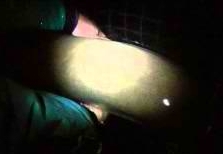|
|

Posts: 1938
Location: Black Creek, WI | Milfoil is making its way into more and more of the lakes I fish. Some lakes have it so bad that large expansive weedflats that were once beautiful 10 foot cabbage now get matted out with milfoill by mid summer. Anyone have some experience with this junk?
I can remember seeing a presentation by Dave Christian that had some good info about low oxygen levels and high water temps in the middle of these milfoil patches down in Kentucky. I'm assuming the same happens up here in the midwest as well? How do the muskies react to this new environment? Is there ever a time that muskies can be found in the milfoil, or do they always avoid it?
Any technical info about this stuff would be welcomed along with any personal experiences on how to deal with it. Thanks!
jlong |
|
| |
|

Posts: 20266
Location: oswego, il | Muskies will relate to the millfoil. Millfoil can create some great weed walls to fish. It's good to fish over when it's not to the surface as well. It's a major pain to fish and you won't get anything through it but the muskies will use it. The millfoil will dominate the lake too. It grows so thick that we have actually broke off lures becuase we could not get them out and when we did we brought back 20lbs of weeds. Some people say fish can get in it, I suppose in some instances they can but it can be so dense I think it drives alot of fish out of it, certainly anything that schools can't use but only the edges. |
|
| |
|
| Hi Jason
Don't have any technical stuff re. muskies/milfoil, only personal experience.
I find the muskies will use the milfoil edge almost like a steep breaking/rock wall type situation. They will suspend out from them, and will use the inside turns in the weed walls with the same seasonal/weather movements that rock related fish will use.
I also do alot of sight fishing on Tonka (lots and lots of milfoil) and usually see fish relating to the clean side of the inside edges, and not necessarily in or over the thick stuff. I like other weed types better for true slop fishing, but other guys will tell you they get them right in the the thick milfoil. I just don't have confidence in that for a truly big fish.
Also, if you haven't found this site yet, check out the Bass Fishing Home Page. I think its under the "articles" drop down. Ralph Manns has done a lot of research relating to bass and how they relate to weeds/wind/O2/current/forage size/vision/etc. Lots of interesting fish related info. - just don't know how much relates to muskies. Probably some.
See ya!
BrianF.
Twin Cities |
|
| |
|

Posts: 1938
Location: Black Creek, WI | OK... I'm figuring out the daytime fishing in the Milfoil Madness... but nightfishing success still eludes me.
This lake is a prime candidate for the classic night bite. Big, extreme recreational boat traffic, clear water, structure galore (big and small, shallow and deep), and loaded with forage. Where do these fish go in these types of systems once the lights go out?????
jlong |
|
| |
|

Posts: 2384
Location: On the X that marks the mucky spot | If you crack that nut let me know. I've been hitting tonka at night quite a bit lately with nothing to show for it. I've caught some fish at night out there, but nothing I would want to bet my favorite suick on.
One of the times I've really ever do well fishing IN the millfoil is in the spring/early summer before it gets to the surface. I fish it with small shallow running cranks, bladed and the secret weapon: Buzzbaits. For some reason buzzbaits like a boogerman really gets them to come out and play. You can be running it over the millfoil and a fish will blow-up out of nowhere.
The other time that it's good is after it's died during a certain time window in the fall. This is where you have to keep an eye on your temp gauge (as you should all the time). During a certain period the millfoil is the warmest place on the lake. Fish with buzzbaits or other fast moving/shallow running baits. The fish are usually fairly active for this bite. One thing to keep in mind while fishing this way: you've got to be jonny on the spot to reel in any slack and turn that fish's head up so they don't bury themselves in the milfoil. If you don't you can kiss the fish goodbye.
During the rest of the year I fish the inside and outside edges. I typically am out 1-2 casts from the visible break. Of course this also is dependant on how far along the weeds are. Weeds low fish in closer, weeds up to the top fish deeper. |
|
| |
|
| Jason
Are you still talking the Milfoil game at night? Not sure about your question. If you are, I make the following observations after fishing a milfoil infested lakes here for the past 10 years. Remember, we're talking matted, thick milfoil here. Not the beautiful deep green cabbage or broad leaf "tabacco" cabbage that you've got in so many lakes in Wisconi. That's a bit different story in my mind...but not much.
I try to avoid fishing over Milfoil areas at night, though will fish around them for the first hour after true darkness. I surmise that there is a negative O2 and PH issue that develops after sunset. Also don't think that the biggest fish in the system is going to forage real effectively in that thick stuff - day or night. Too easy for prey to escape, and the prey that uses it (mostly panfish, some perch) isn't conducive to real fatties. I want to fish in areas where a truly giant musky has a chance to run down a big sucker or snag a ciscoe. Just seems to me that the larger specimens don't like thick Milfoil weed areas all that much after dark (I have caught muskies in and over it, but generally they were smaller, thin fish). The exceptions I have seen are in cold water of fall (dead or dying milfoil) or lots of wind/wave action blowing through it.
I like to fish shallow and find wind blown areas that has had/having some wind/wave action off of larger main lack areas at night. I key on rock/sand or just plain sand areas - intentionally avoiding the milfoil altogether - and have pretty decent success. Biggest last year was a 49.5" over shallow rock/sand with big white/silver Eagletail just after midnight in mid August.
I agree with the previous post about green water at night. Doesn't really seem to develop a strong night bite, but have had success on stained water. Still, I prefer clear water at night anytime.
BrianF.
Twin Cities |
|
| |
|

Posts: 1938
Location: Black Creek, WI | Well... yes I turned this question more specifically to NIGHT fishing the Milfoil since I've had much poorer results in the darkness. However, I'm always open to learning new tricks... day or night (heh heh).
I've been going through a learning curve for understanding where Milfoil thrives and where it doesn't. Seems the harder bottom areas exposed to the main-lake basin stay "clean". As a bonus, some fringe cabbage grows on the edge of the breaks that drop from 5 or 6 foot sharply to 15+. These areas look very nice, but don't seem as productive during daylight/clear water conditions as the milfoil edges. However, after dark I'd expect these hard bottom areas to turn on??? Also, the large flats leading to these sand breaks often have sand grass (single blades that grow about a foot off the bottom)... which I would think hold suckers.... a preferred big fish forage.
I plan to take a spot light and check some of the large, shallow sand flats for any signs of suckers... since I have a mental block for fishing 3 feet of bald, white sand. Need motivation???
Thanks everyone for sharing your milfoil experiences. Priceless info.
jlong |
|
| |
|

Posts: 20266
Location: oswego, il | Another thing to consider is that millfoil will make walls with plenty of shad and places for ambush during the day. It grows so thick that perhaps it becomes difficult to feed at night. |
|
| |
|
Posts: 177
Location: Lake Forest, Illinois | Guys,
I believe that Milllfoil puts out oxygen during the day, and does the opposite at night. Therefore, during the day, the bait fish can hide and breath in the millfoil. But at night, they need to come out of it to find more oxygen. At night, run spinner baits, etc right along the edge of the millfoil looking for muskies that are feeding on the fleeing bait fish. This is especially true , I believe, on lakes that never seem to have a good early morning bite and seem to 'come alive' late morning as the oxygen gets back in the water.
Sean |
|
| |
 Milfoil
Milfoil Milfoil
Milfoil